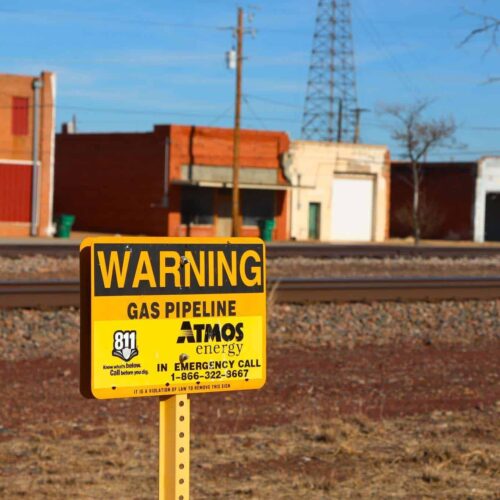Introduction
We’re publishing a series of Q&As with reporters who have uncovered powerful investigative stories. This week, we spoke to Cary Aspinwall from The Marshall Project, previously with the Dallas Morning News.
When she was in Dallas, she wrote about how Atmos Energy’s natural gas leaks caused Texas homes to go up in flames (while customers paid the tab). She also investigated how Texas let Atmos Energy off the hook.Y
1. How did you get the story? What led you to pursue it?
We started investigating Atmos Energy’s record of gas leak-fueled explosions in and near Dallas after a house blew up in February 2018, killing 12-year-old Michellita Rogers. Shortly after her death, Atmos had to evacuate her family’s neighborhood and replace its entire gas distribution system. That was a huge red flag, as were reports that two other homes caught fire before her house exploded. The company was blaming heavy rains and unique soil conditions – we didn’t think that was the whole story, so wanted to get to the bottom of what was going on.
So Cary and her colleague Holly Hacker filed records requests. They uncovered emails that proved Atmos Energy was actively searching for gas leaks near Michellita’s home the night before she died – and downplaying previous fires, saying they were related but not close.
Cary says: I drove the neighborhood and saw the two burned-out houses were right by the Rogers home – they shared an alley. So we had two early scoops: Atmos was searching for leaks before her death and chose not to evacuate or shut off gas. I also found a City of Dallas utility right-of-way permit showing Atmos said it would start repairs on a gas leak behind Michellita’s home over a month before her death.
We found that since 2006, more than two dozen homes in our coverage area had been destroyed or damaged because of natural gas leaking from Atmos Energy’s pipes – nine people died, at least 22 others were injured.
2. What were the challenges of reporting and how did you navigate them?
This was tough. We built a database/timeline of every known explosion, fire, death and injury that occurred here since Atmos bought the gas distribution system. There’s not a single state or federal agency that tracks all gas-related explosions — there are gaps in the rules about what they must report.
Deaths also aren’t always reported. In the cases that they examined, someone died of severe burns after that time period or was injured and not hospitalized. In other blasts, the dollar value of the home wasn’t high enough to be reported. Other explosions were left out of the Pipeline and Hazardous Materials or state database because Atmos said its own investigators had later determined that leaking gas was not what caused certain blasts.
How many times/how much Atmos was fined or cited by Texas regulators also wasn’t in a single database. We extracted it from thousands of pages of records. Many of the injured families never knew Texas dropped proposed fines for Atmos after the families’ lawsuits against the company settled. Most families couldn’t talk because of non-disclosure agreements they signed in settlements. We searched thousands of pages of financial records to find the dollar value that Atmos charged customers for recouping the expense of its insurance payments from houses blowing up.
You can find Cary here.
Subscribe to our newsletter for more Q&As:


Join the conversation
Show Comments